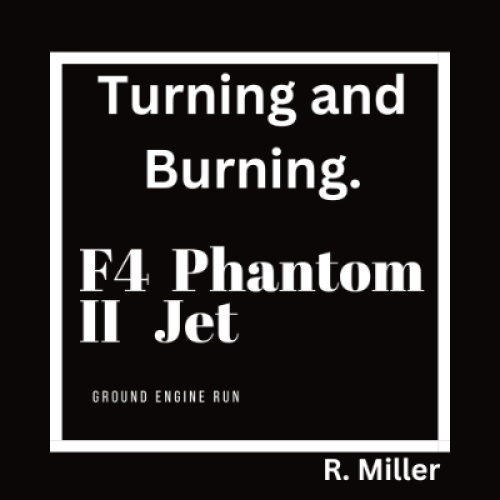My ambition had always been to follow the path of the military. After proudly ditching my cap and gown, I reported to Parris Island, South Carolina, just a day later. The next fifteen weeks were hell but well worth it, and I was ready for whatever challenge awaited, even if it extended for thirty weeks. The allure of a guaranteed military occupational specialty in jet engines kept me driven.
As I sat in the crew station of the Phantom, the moment arrived for me to push the throttle past the idle position. This magnificent twin-engine aircraft was a marvel of engineering, and I was about to experience the power I would someday learn to maintain and optimize. I nudged the throttle forward and met with the exhilarating response of the mighty J79 turbofan engine. As the aircraft's nose dipped, propelled by the thunderous roar of the engine, I couldn't help but smile and whisper, "Burn, baby burn." That noise - the harmonious growl of the turbofan - was music to my ears, a song that spoke to my soul.
All those evenings spent pouring over aviation books and assembling model planes had led up to this electrifying moment in Millington, Tennessee. However, the sheer thrill and nervous energy became too much for me, and I inadvertently advanced the throttle further than intended. Instantly, I was propelled back to the reality of being a Marine, reminded of the discipline required in this role. As soon as my single-engine run concluded, the consequences of my enthusiasm became apparent, and I faced the repercussions of my overexcitement, a necessary lesson in military precision.
In the United States, it's a unique and humbling experience for a kid who navigated the foster care system to be entrusted with the keys to such a powerful, multi-million-dollar machine. I immersed myself in the world of the Phantom II, mastering the art of handling the formidable J-79 engines and experiencing the thrill of their power firsthand. There were countless instances of removing and replacing those enormous engines, each time deepening my understanding of the turbofan's intricate language.
My journey continued as I dedicated twenty-one years to the Marines, performing low and high-powered run-ups. Among the aircraft I worked on were those equipped with Rolls Royce Pegasus F402RR406 and 408A jet engines, driving the dynamic Harrier II, known for its Vertical Short Takeoff and Landing capabilities. Nothing could compare to the adrenaline rush of tying a jet to the ramp and unleashing its full military power, the roar of the engines echoing around me as they surged. Each moment spent in that crew station cemented my passion for aviation, fueling my lifelong admiration for the mechanics that make flight possible. The Phantom II was powerful and would scream to be freed from its tie-downs and underthrust, and the objective was to speed down the runway and get airborne fast with two J79 engines in full afterburner.
The Harrier II Plus was loud at idle and advancing, and the throttle began singing to me. On the high-power ramp or at the hush house, the harrier would scream under power, and the beautiful thing about the harrier was the nozzles could be rotated, and the Peagusus did not need a runway; the power of the engine would leave the ground if the 10 tie down chains and a massive high power chains let loose. The Harrier was like a bucking broncho. The Marine performing a high-power runup was not strapped in; you held on and monitored and recorded engine performances.
Experiencing the exhilarating rush of turning and burning jet engines was the highlight of my life. Years spent diligently working on these magnificent machines ignited a fire within me - a spark that guided me through my journey as a foster kid. I became a pivotal figure for countless pilots, who trusted me to deliver an exceptional product that empowered them to soar confidently through the skies.
Throughout this journey, we faced loss, mourning many brave Marines who made the ultimate sacrifice. In honor of them, I extend my most profound respect to the Gold Star Families and all who have donned the uniform or supported our valiant men and women in service. They embody the essence of America's greatness and deserve unwavering respect, now and always.





